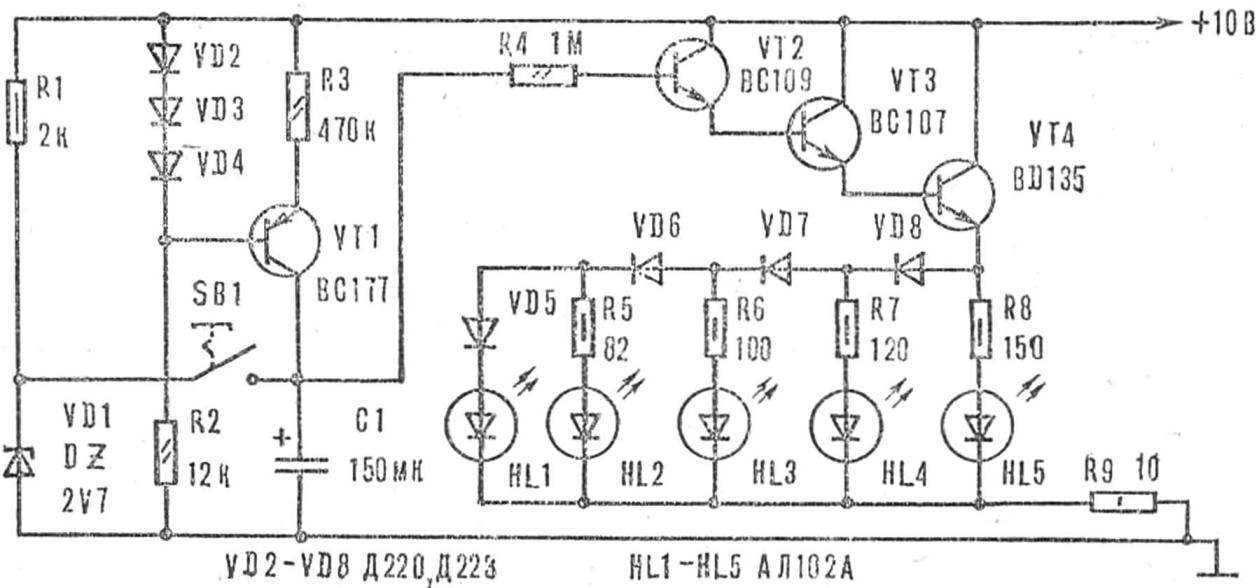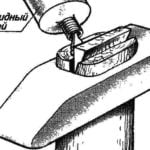 The Romanian magazine “Technium” offers a diagram of the electronic timer operates on the principle of the 5-minute hourglass clock every minute. The indication to carry out the LEDs. Such a device will find use in a home darkroom, sports training and rhythmic gymnastics. If the time interval exceeds 5 minutes, the device as a normal hourglass, you can restart and continue counting. Here’s how it works.
The Romanian magazine “Technium” offers a diagram of the electronic timer operates on the principle of the 5-minute hourglass clock every minute. The indication to carry out the LEDs. Such a device will find use in a home darkroom, sports training and rhythmic gymnastics. If the time interval exceeds 5 minutes, the device as a normal hourglass, you can restart and continue counting. Here’s how it works.
After a short-circuit buttons SV1 (see circuit diagram) begins to charge capacitor C1 included in the collector circuit of the transistor VT1. The voltage S1 is supplied to the amplifier with high input impedance, assembled according to the diagram of the composite emitter follower transistors VT2— VТ4. His load is a led indicator HL1—HL5, activated alternately with a minute interval. To compensate for the initial voltage drop at the stations, “emitter-base” VT2—VТ4, capacitor C1 starts charging with voltage around 2.7 V, which is formed on the diode VD1. It is possible to replace three or four series-connected silicon diodes type Д220, Д223.

The capacitor C1 is chosen small leakage currents. The transistors shown in the circuit diagram, can be replaced by domestic: VT1—КТ361Б, VT2—КТ312В, VТЗ—КТ603А, VТ4—П701А or КТ801А. It requires a radiator with area of dispersion of at least 20 cm2.



